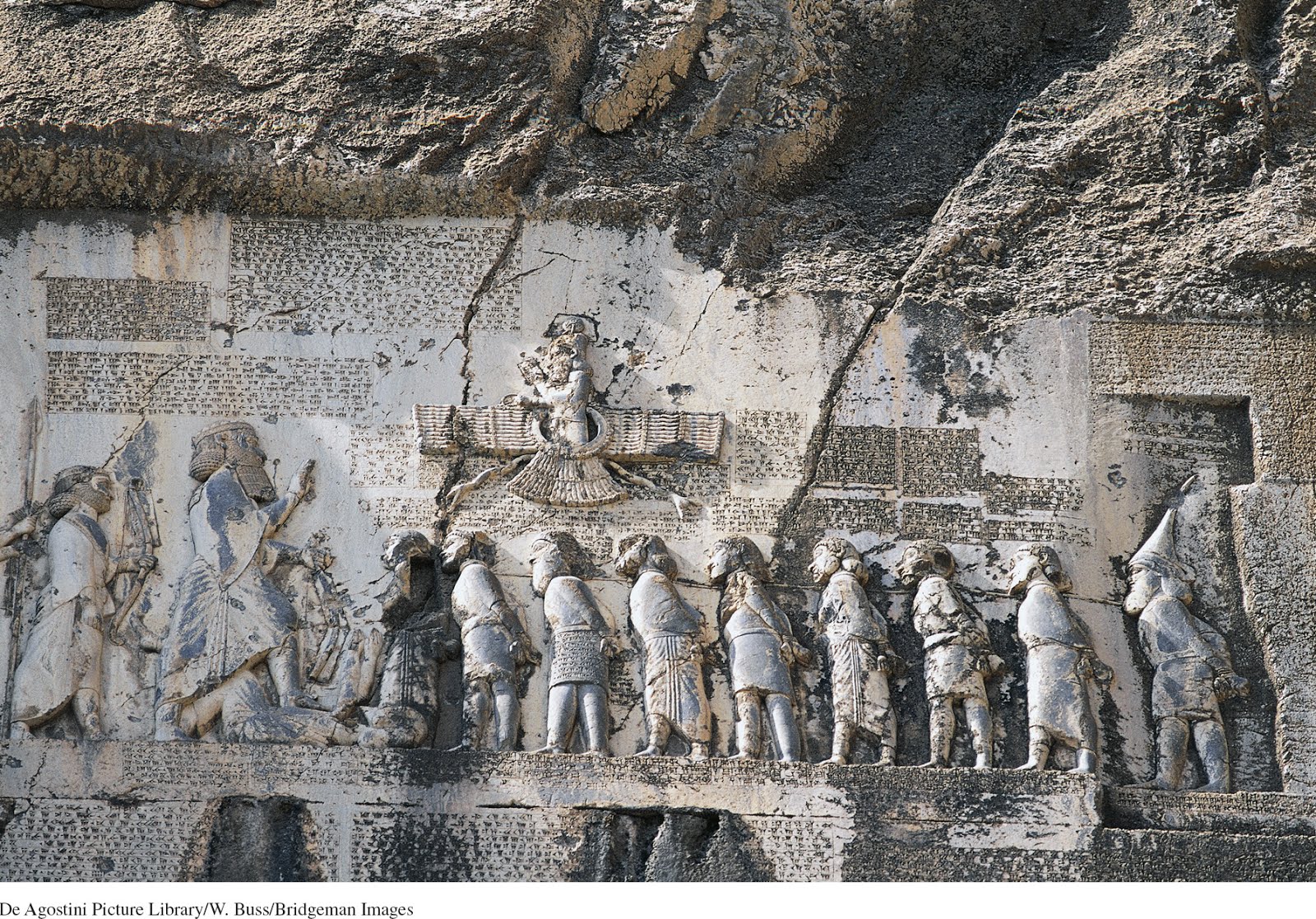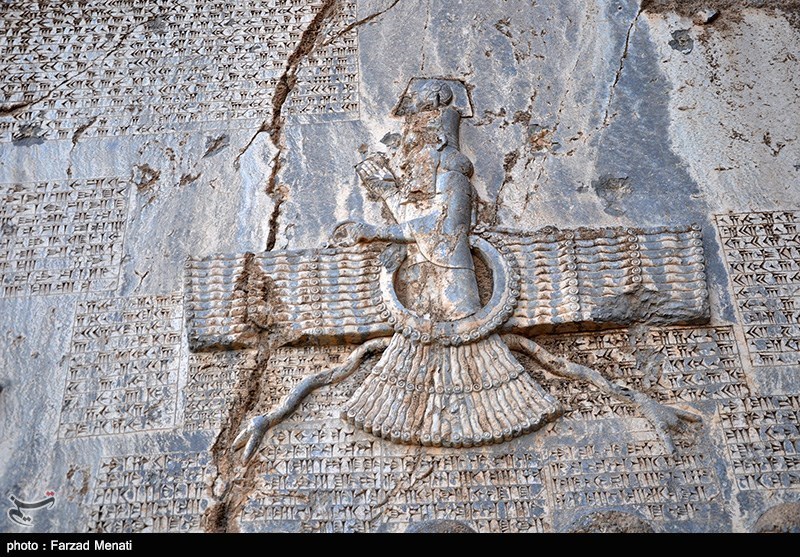The Behistun Inscription, etched into the rocky canvas of Behistun Mountain, stands as a testament to the ancient art of communication and storytelling. Meaning “Abode of God,” this multilingual inscription and expansive stone relief provide a fascinating glimpse into the historical tapestry of ancient civilizations. In this article, we embark on a journey to explore the significance, linguistic richness, and the enigmatic stories hidden within the Behistun Inscription.

The Geographic Marvel of Behistun Mountain: Located in present-day Iran, Behistun Mountain serves as the canvas for an extraordinary piece of ancient history. Rising majestically, the mountain became the backdrop for the Behistun Inscription, strategically positioned at a height that would ensure its visibility to passersby and travelers in ancient times. This geographic choice reflects the intentional nature of this historical record.
Multilingual Marvel: Carved into the face of the cliff, the Behistun Inscription is a multilingual masterpiece, presenting the same content in three ancient languages: Old Persian, Elamite, and Akkadian. Commissioned by Darius the Great, the inscription narrates the triumphs and tribulations of his reign, offering a unique linguistic puzzle for scholars and linguists to unravel.

Old Persian: The Royal Voice: Old Persian, one of the Achaemenid languages, is prominently featured in the Behistun Inscription. As the language of the Achaemenid Empire, it served as a royal proclamation, allowing Darius the Great to communicate directly with his subjects and future generations. The precision and clarity of Old Persian in the inscription underline its role as the primary medium for official communication.
Elamite: The Regional Voice: Elamite, an ancient language of the Elamite Empire, occupies a significant portion of the Behistun Inscription. By including Elamite, Darius acknowledged the diverse linguistic landscape of his empire, catering to regional identities and ensuring that the inscription conveyed a message comprehensible to various linguistic communities.
Akkadian: The International Voice: Akkadian, a Semitic language with widespread use in the ancient Near East, including Babylon, appears in the Behistun Inscription, emphasizing the international reach of Darius the Great’s empire. By using Akkadian, the inscription became accessible to a broader audience, reflecting the empire’s diverse cultural and linguistic fabric.
Historical Narratives: Decoding Darius’ Triumphs and Challenges: The Behistun Inscription serves as a historical narrative, documenting Darius the Great’s rise to power after suppressing rebellions and consolidating the Achaemenid Empire. The detailed accounts of battles, victories, and the establishment of order shed light on the challenges faced by Darius and the strategies employed to secure his rule.
Scholarly Endeavors: Unraveling the Linguistic Puzzle: The Behistun Inscription has been a subject of scholarly fascination and challenge. Linguists and epigraphers have devoted considerable effort to deciphering and translating the inscriptions in each language, contributing to our understanding of ancient Persian, Elamite, and Akkadian. The inscription has played a pivotal role in unlocking the linguistic and historical complexities of the ancient Near East.
Cultural and Archaeological Impact: Beyond its linguistic significance, the Behistun Inscription has had a profound impact on the cultural and archaeological understanding of the Achaemenid Empire. The visual elements, such as the colossal relief accompanying the text, depict Darius the Great standing over subdued figures, symbolizing the king’s authority and dominance.

The Behistun Inscription, with its multilingual complexity and historical richness, stands as a monumental testament to the ancient art of communication. From the towering cliffs of Behistun Mountain, Darius the Great’s proclamation echoes through time, offering insights into the linguistic diversity, political intricacies, and triumphant narratives of the Achaemenid Empire. As scholars continue to decode its linguistic puzzle, the Behistun Inscription remains a captivating window into the grandeur of ancient civilizations and their mastery of language and storytelling.